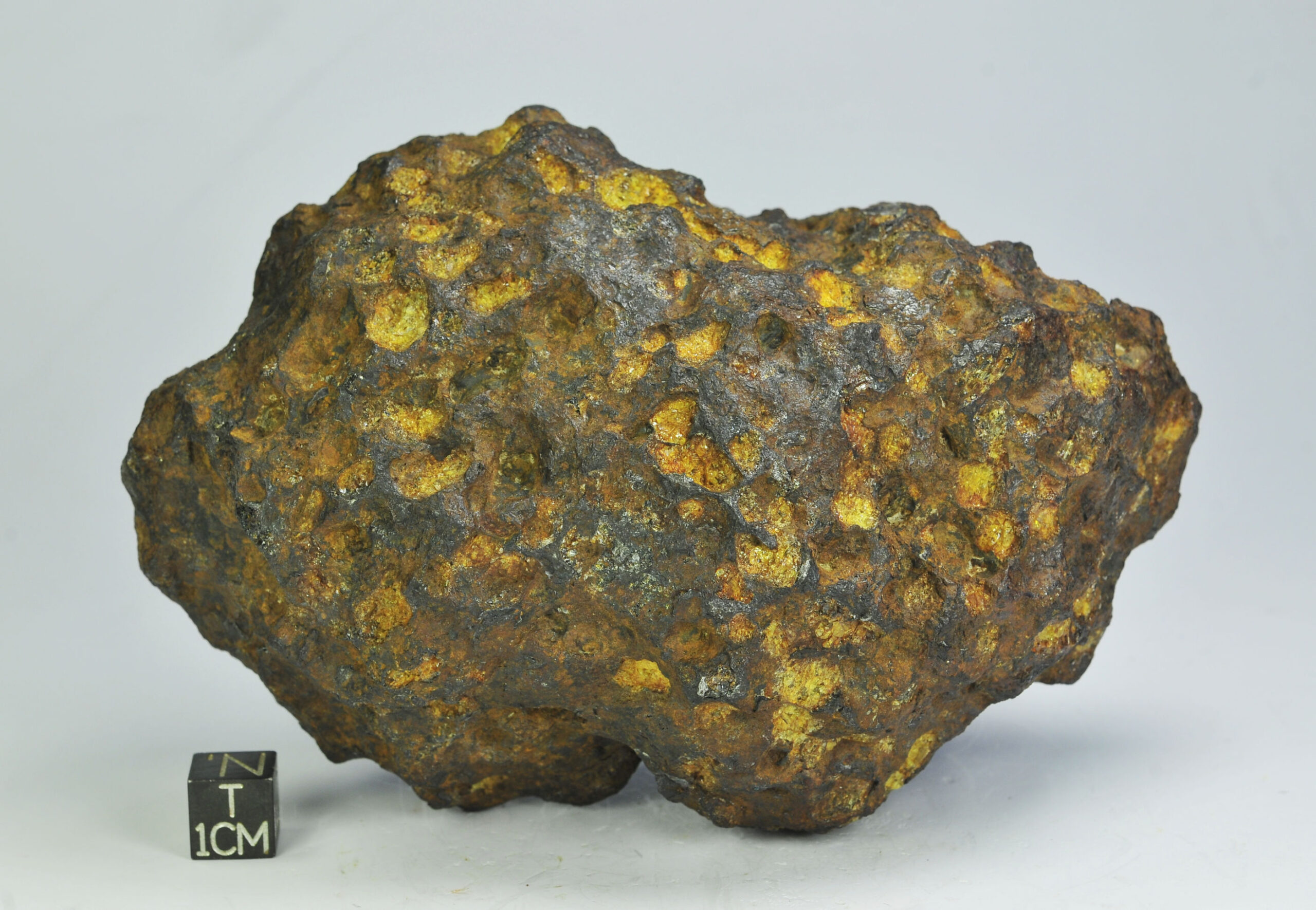

The iron grains and minerals will rust and weather making the meteorite browner. It is often black if the meteorite is freshly fallen, but will turn more and more brown as time passes laying on the ground. This melted coating is called ‘Fusion Crust’. They interact with the thin air high above the ground and are melted on the outside surface. This speed is thousands of miles per hour. Meteorites pass through the atmosphere of the Earth initially at the speed they had in space. So ‘Responds to a Magnet’ and makes a ‘Brown Streak or Powder’ is the next characteristic. Fresh meteorites may not make brown powder but older stone meteorites usually will. The powder produced by grinding most meteorites will be brown. But, it will not have metal grains when ground and the powder produced by the grinding will be black. Magnetite is one of the most common and is often found in rocks. But many rocks on the Earth that are not meteorites contain iron in chemical forms that are magnet responsive. You will want to grind a little spot as discussed above and see if there is metal. If a magnet will stick to your rock or a magnet will pull the rock when it is hung from a string that may mean there is iron metal in the suspect rock. So having ‘Metal Grains’ is the next thing on our list of characteristics.īecause meteorites often have iron metal in them they will respond when a strong magnet is brought near them. The metal spots in meteorites will be actual metal they will look the way the chrome on a car looks. These will not be a metallic luster or shininess. One thing to think about here is what I mean by shiny metal spots. So, if you grind off a small spot on your suspect rock and find bright shiny metal spots this is another good indication that you might have a meteorite of the stone type. The moist atmosphere of the Earth has turned almost all native iron to some other chemical form of iron long ago. Metallic iron in rocks from the Earth is very rare. Stone meteorites often have grains of nickel-iron in them. So ‘Solid’ and ‘Not Crystalline’ and ‘Not layered’ are phrases to remember. They will not be layered or banded with different strips of mineral types. Most stone meteorites will not have shiny crystals in them.


But it will not have holes inside if it is a meteorite. These are called chondrules and many stone meteorites (the chondrites) will have them. It may have small round structures like tiny balls showing on the broken surface. It will not be porous like lava rocks are. If the rock is broken it will be solid inside. So ‘Heavy for Size’ is the first thing to examine in your suspect rock. But, true meteorites are often much heavier for their size than an Earth rock. These meteorites look like a rock since they are made of mostly mineral material similar to many rocks originating here on Earth. This is by far the largest of the three main types. But for our purpose here let’s work with the three main classes. But, to be honest there are a lot more actual types within the three classes so it can be complicated to make a refined classification. Meteorites come in three different large classes, Stone (Stony), Iron, and Stony-Iron meteorites. But how do we know? A good place to start is with helpful information and meteorite identification tests you can do to help answer your question “Is it a meteorite?”. Some of those rocks are thought to be meteorites. Many people have been to the desert, or river, or perhaps even their own backyard and found a rock that is unusual.


 0 kommentar(er)
0 kommentar(er)
